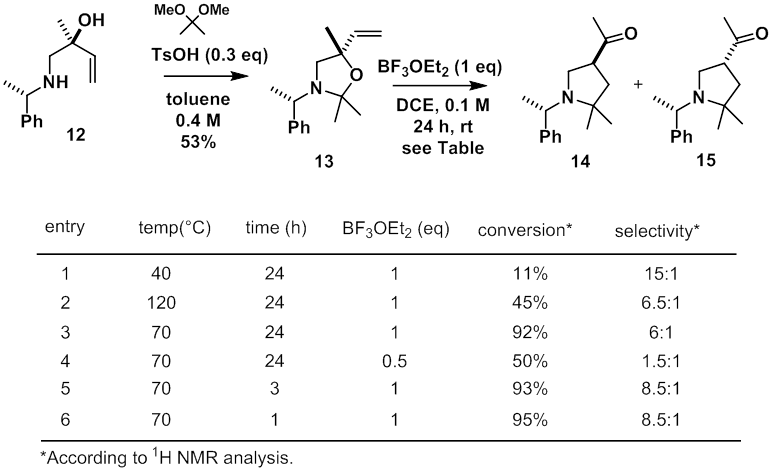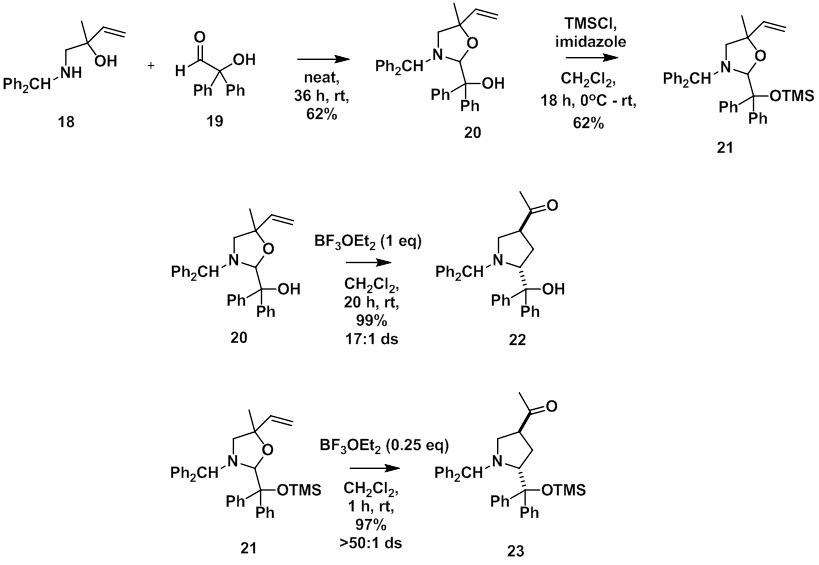Reports: UR151961-UR1: Development of a Catalytic, Asymmetric Aza-Cope Rearrangement and Mannich Cyclization
Harriet A. Lindsay, Eastern Michigan University

[1]
Overman, L. E.; Kakimoto, M.-A. J. Am. Chem. Soc. 1979,
101, 1310-1312.















